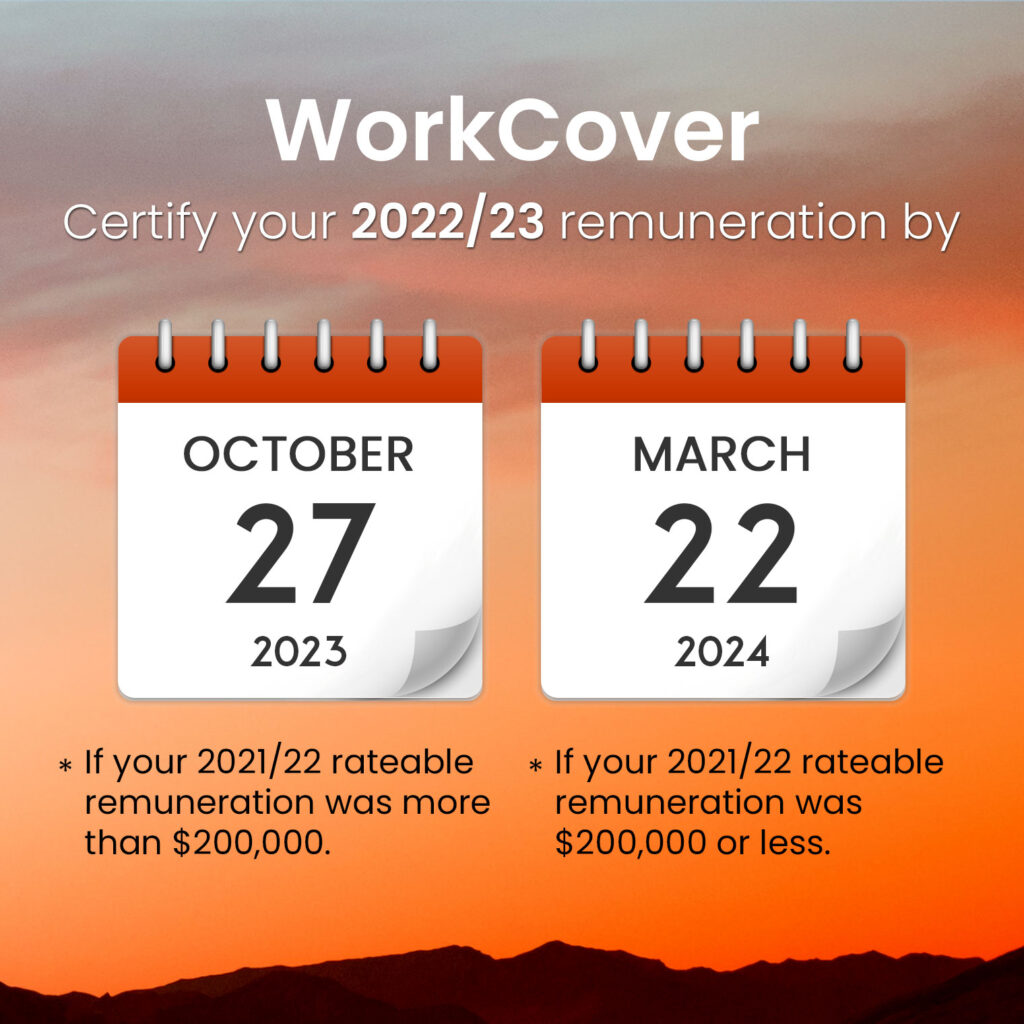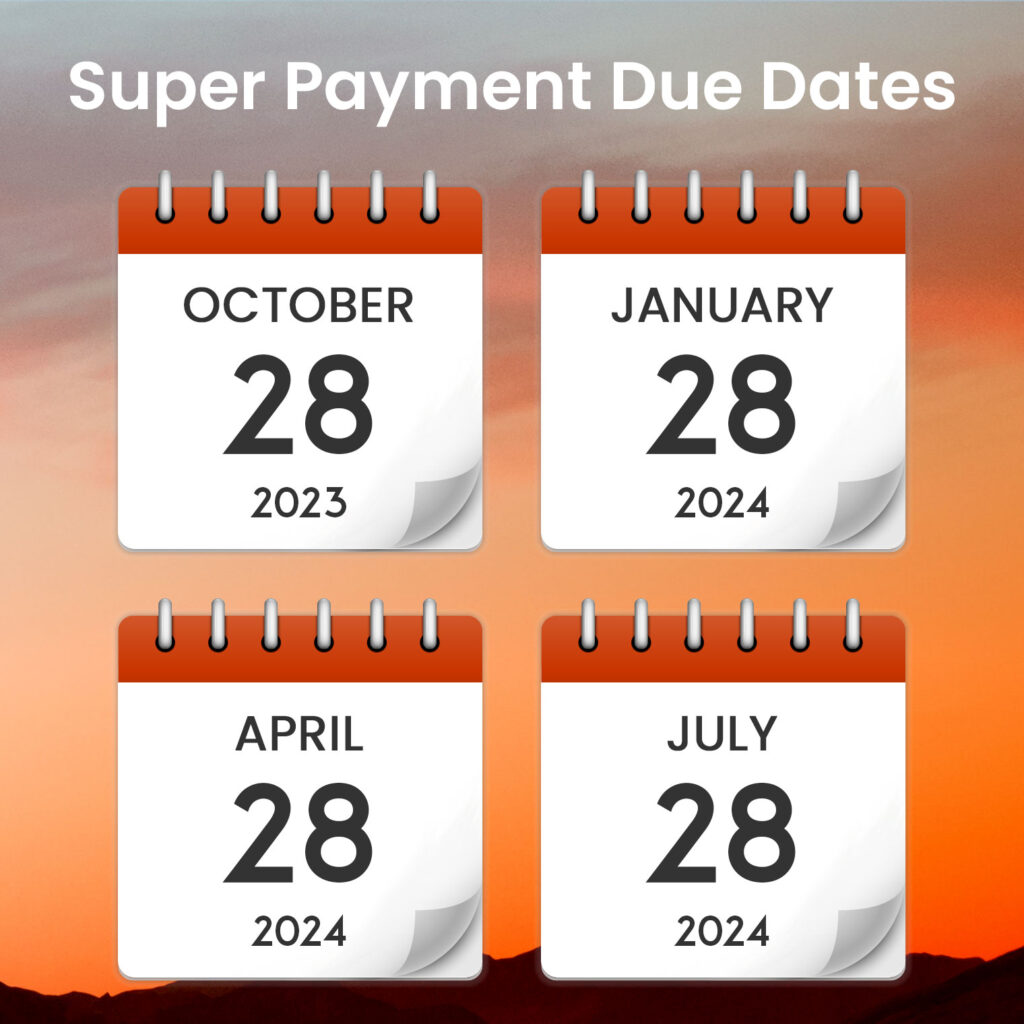

WorkCover
One primary determinant of your WorkCover premium is the size of your business. WorkSafe measures this using your rateable remuneration (e.g. gross wages, salaries and other benefits provided to your workers) and uses this amount to calculate your insurance premium.
| Date | Action |
|---|---|
| 13-Jul-23 | 2023–24 Premium Renewal Notices issued |
| 01-Aug-23 | Last day to take up or cancel buy-out option to eliminate the excess on claims. |
| 14-Aug-23 | Due date for annual premium payment (discounted by 5%).* |
| 01-Oct-23 | Due date for annual premium payment (discounted by 3%).* Due date for first premium instalment (if you pay on a monthly or quarterly plan).* |
| 27-Oct-23 | Due date to certify your rateable remuneration for 2022–23 (if your rateable remuneration for 2021–22 was more than $200,000).** |
| 01-Nov-23 | Due date for annual premium payment (without discount).* |
| 22-Mar-24 | Due date to certify your rateable remuneration for 2022-23 (if your rateable remuneration for 2021-22 was $200,000 or less).** |
Notes:
* You can pay your premium online
** You can complete your remuneration certification online and update your estimated remuneration for 2023–24 at any time
To access WorkSafe’s Online Employer Services, visit worksafe.vic.gov.au/employer.
If you don’t provide your certified remuneration by the due date that applies to you, WorkSafe will estimate your remuneration as 20% more than it was the previous year. Furthermore, penalties may be applied if rateable remuneration is not certified or is incorrectly certified.
For more information about remuneration inclusions and exclusions:
https://www.worksafe.vic.gov.au/remuneration-inclusions-and-exclusions
For more keydates from WorkSafe:
https://www.worksafe.vic.gov.au/industry-rates-and-key-dates
Superannuation
Effective July 1, 2023, the super guarantee (SG) rate has increased from 10.5% to 11%. It’s important to note that this new rate (11%) must be applied to all salaries and wages paid from July 1, 2023, even if they pertain to pay periods prior to that date.
To avoid penalties, including the superannuation guarantee charge (SGC), you must pay the right amount of super for all your eligible employees by the quarterly due dates as follows:
Quarterly payment due dates for super payments:
Quarter | Period | Due Date |
|---|---|---|
1 | 1 Jul – 30 Sep | 28 Oct ‘23 |
2 | 1 Oct – 31 Dec | 28 Jan ‘24 |
3 | 1 Jan – 31 Mar | 28 Apr ‘24 |
4 | 1 Apr – 30 Jun | 28 Jul ‘24 |
Please be aware of the following:
➡️ Allow for processing time. You should pay at least one week before the due date, ideally 15 days after the end of a Quarter. Put this recurring task into your calendar so you won’t forget.
➡️ There have been cases where employers received a warning from the ATO for being just 2 days late.
➡️ If you don’t pay on time, you are liable for the Superannuation Guarantee Charge (SGC), even if you make the payment later. This means lodging tedious forms to ATO, which will include:
– Super shortfall amounts that are calculated on the full salary and wage amount, which includes overtime, allowances, etc.
– Interest charge for the late period (currently10%)
– Administration fee of $20 per employee per quarter
➡️ Furthermore, the ATO has the ability to disallow late payments and impose further penalties, which would result in paying your employees’ superannuation twice for the same quarter.
➡️ Most importantly, late super payments are non-tax deductible!
